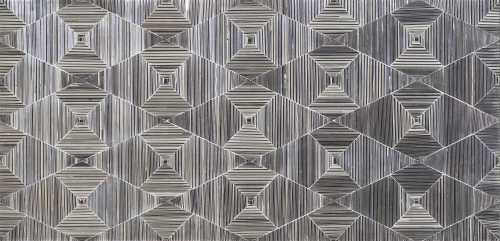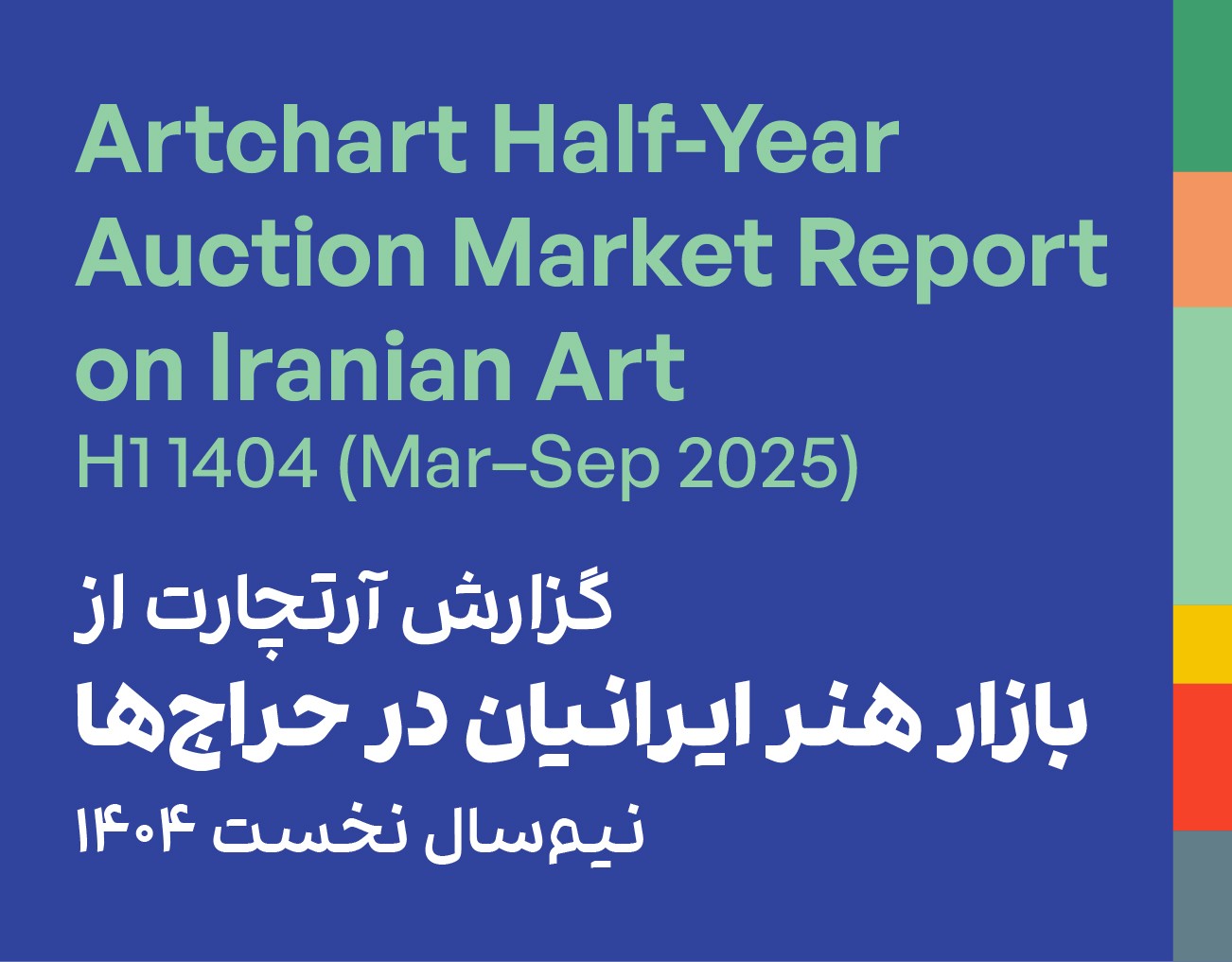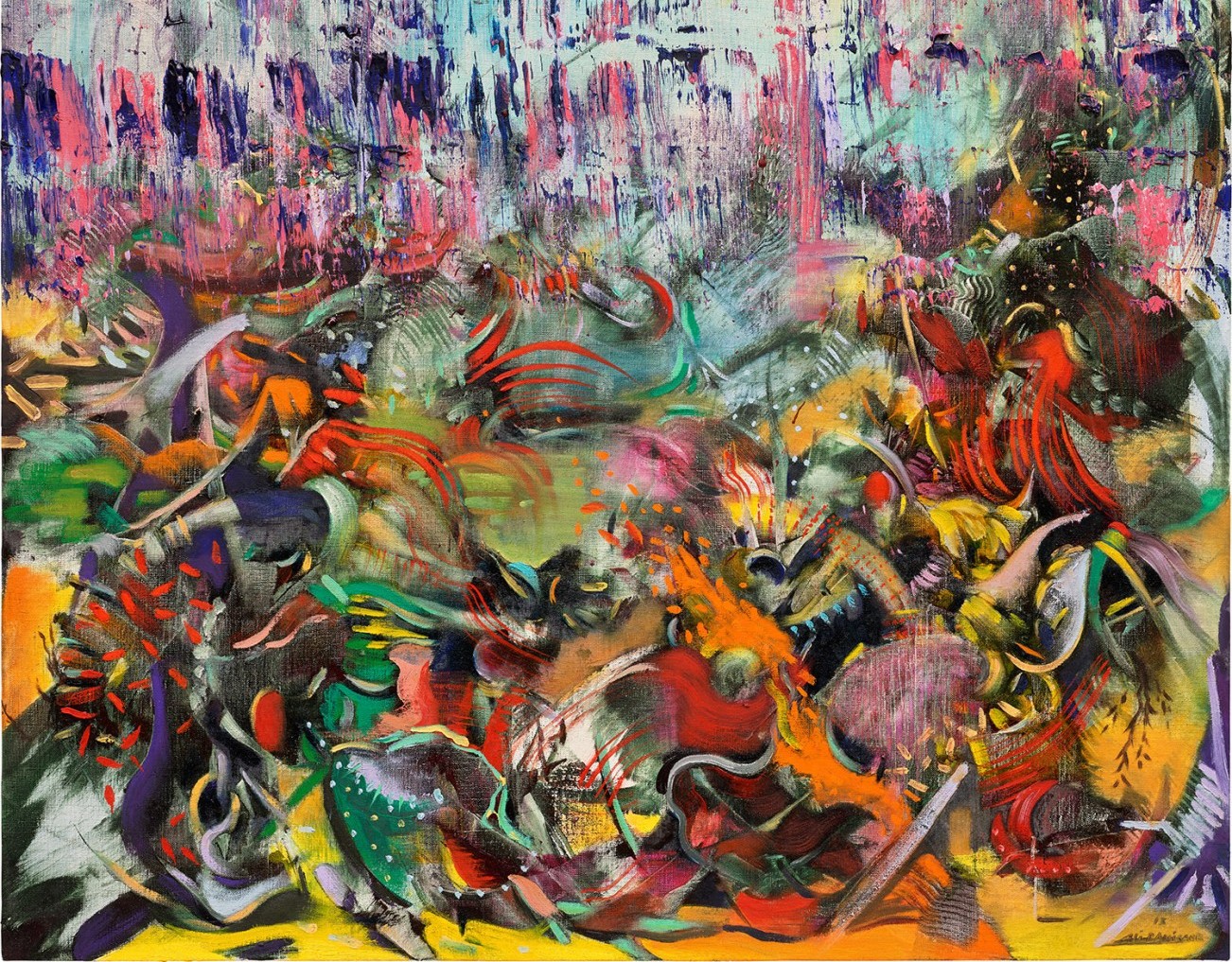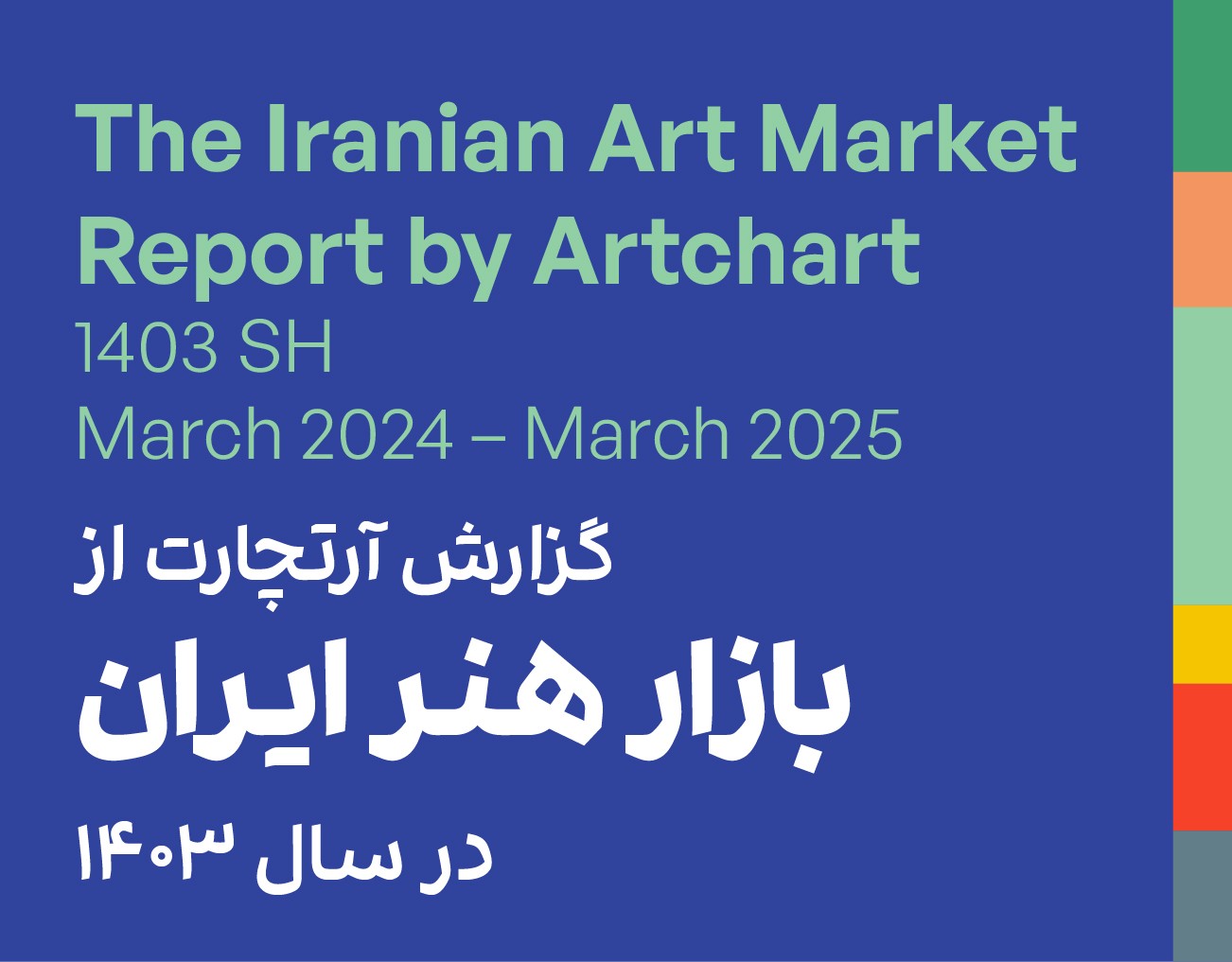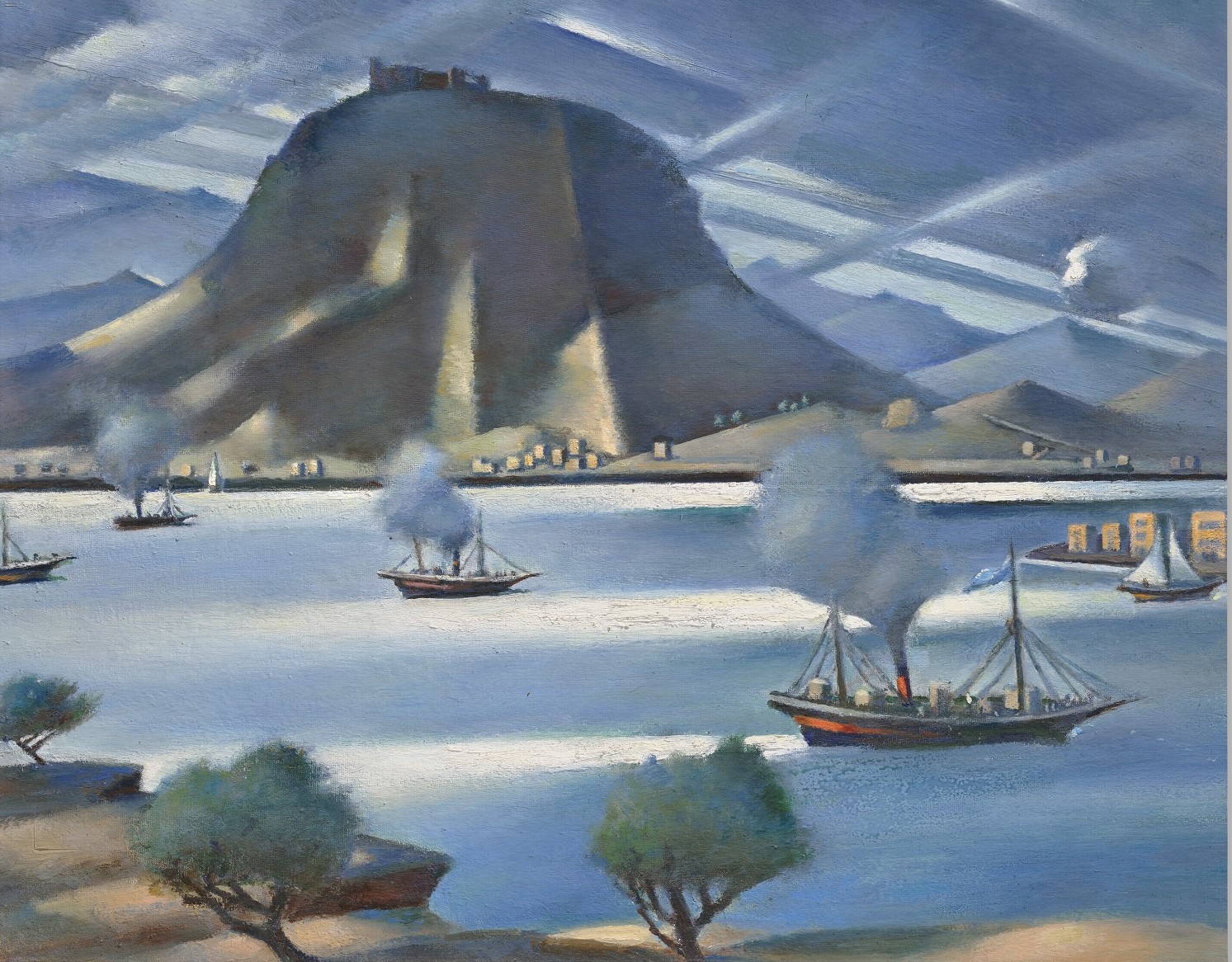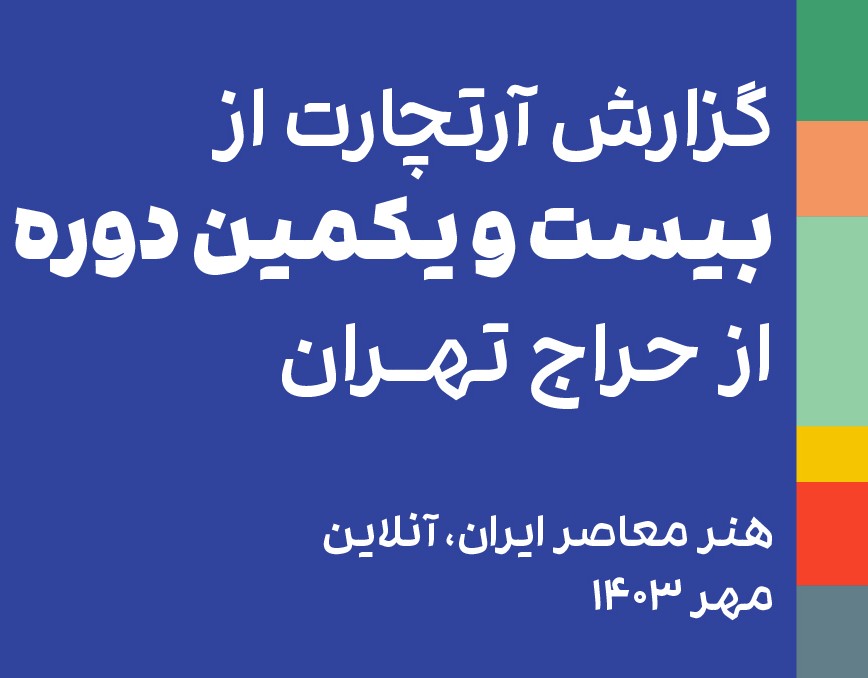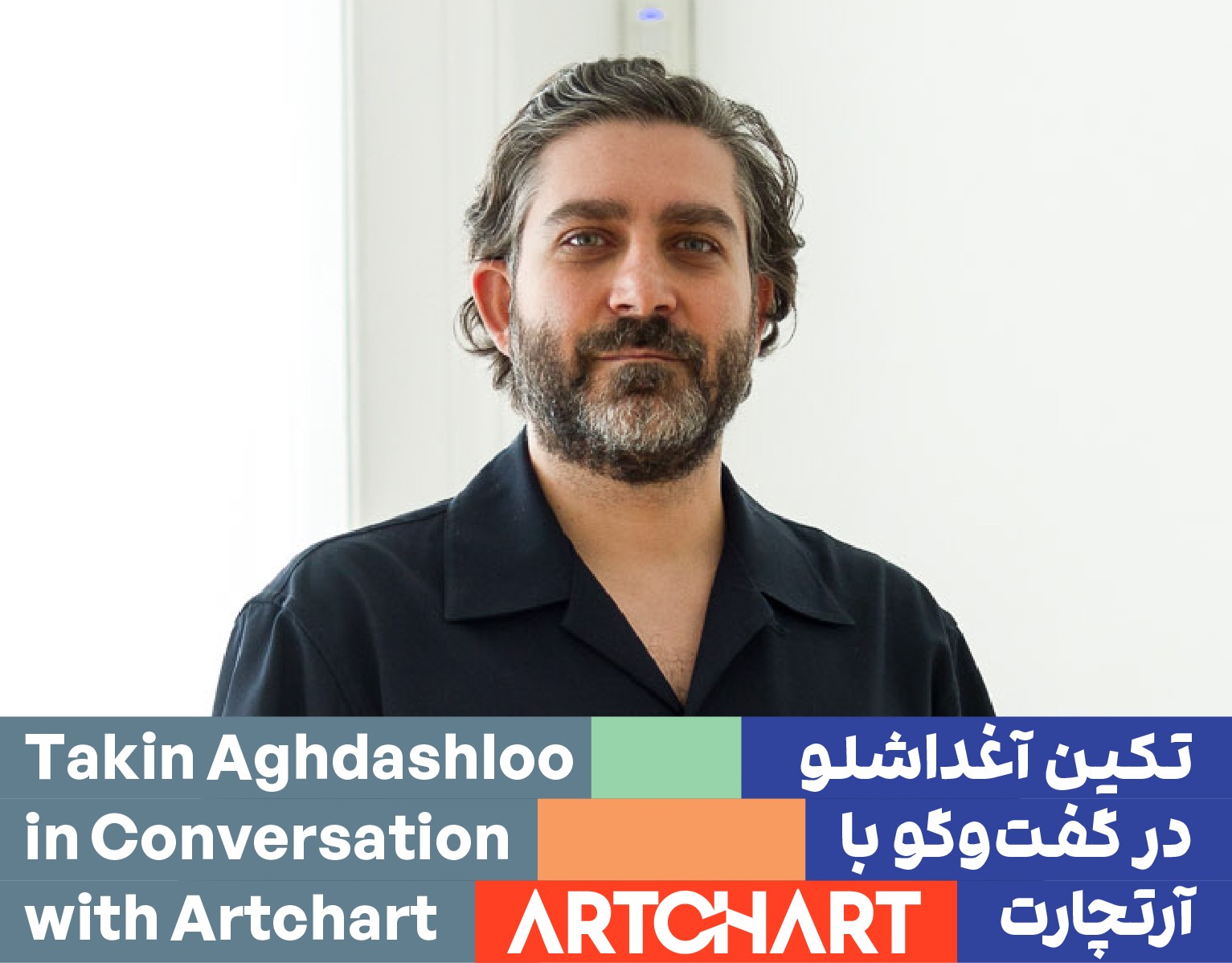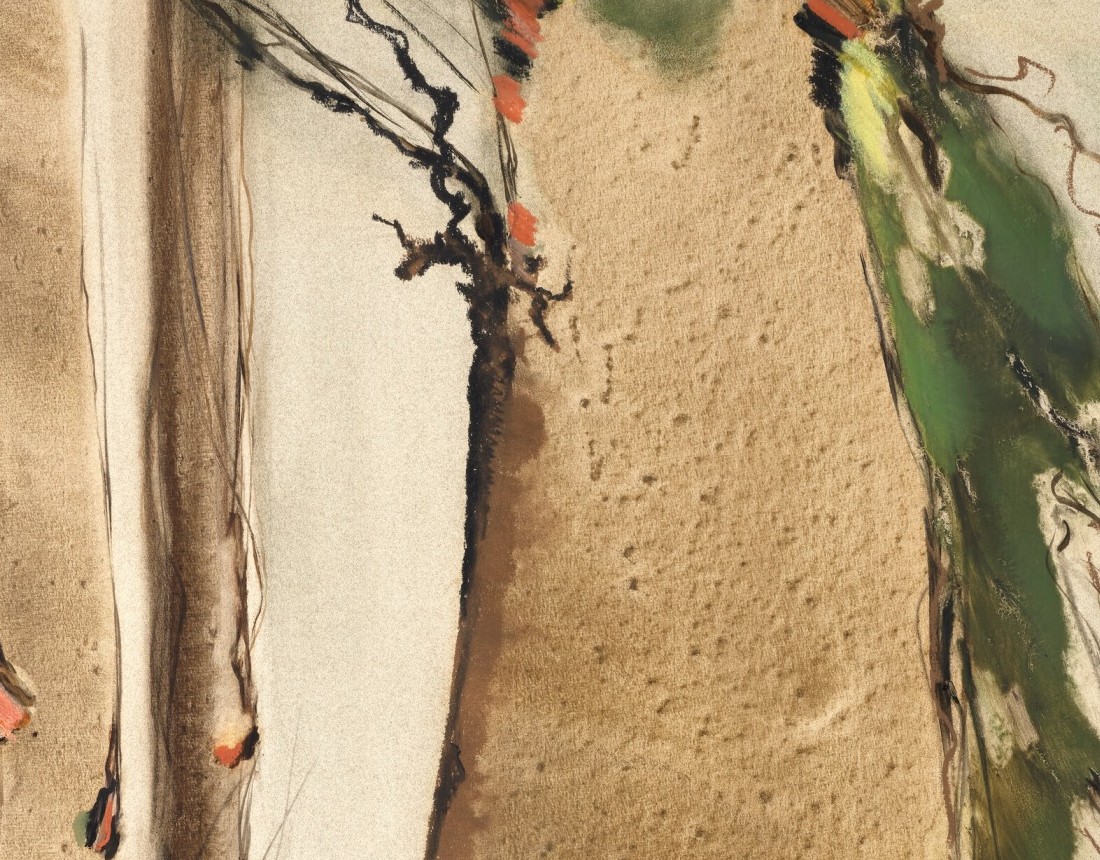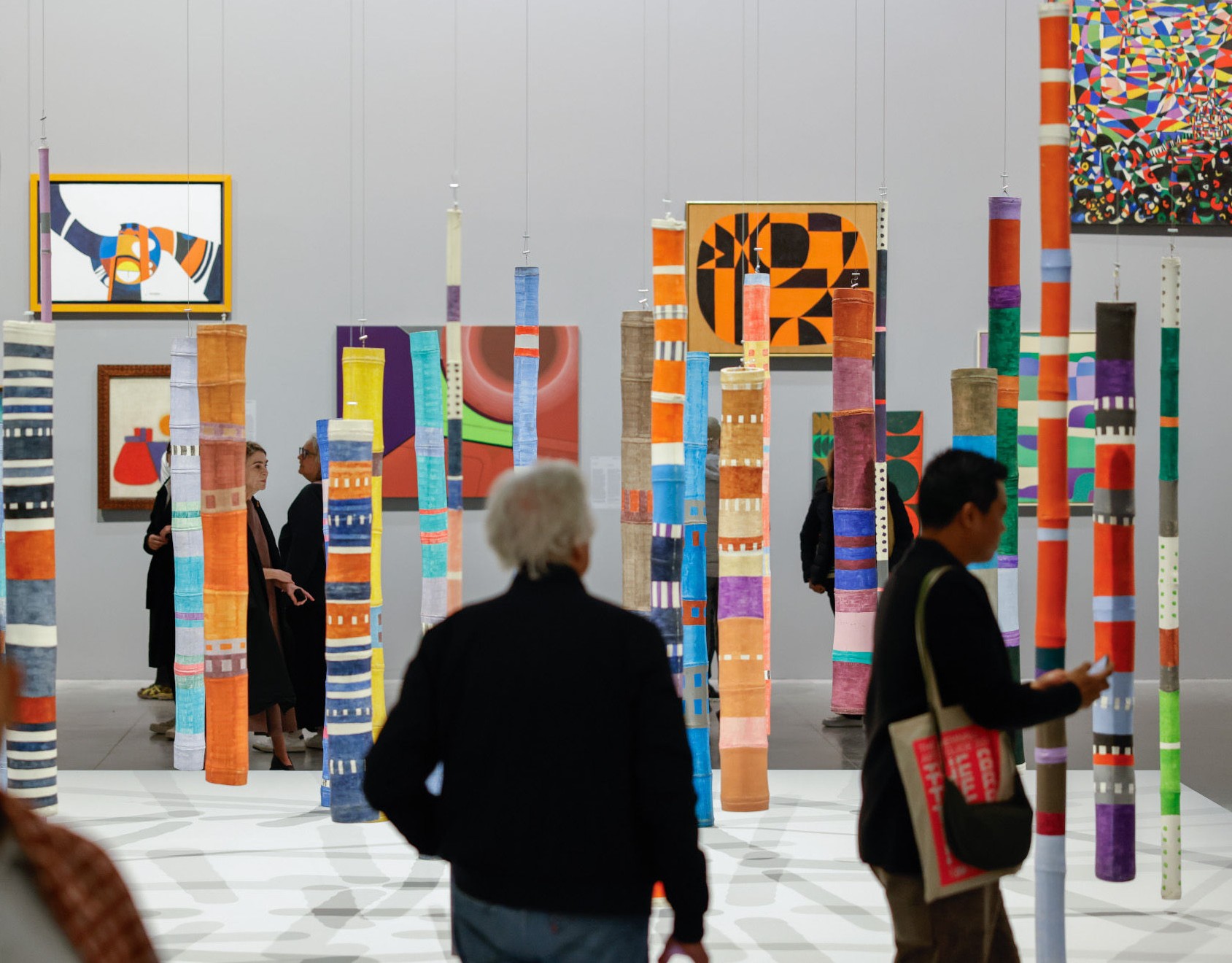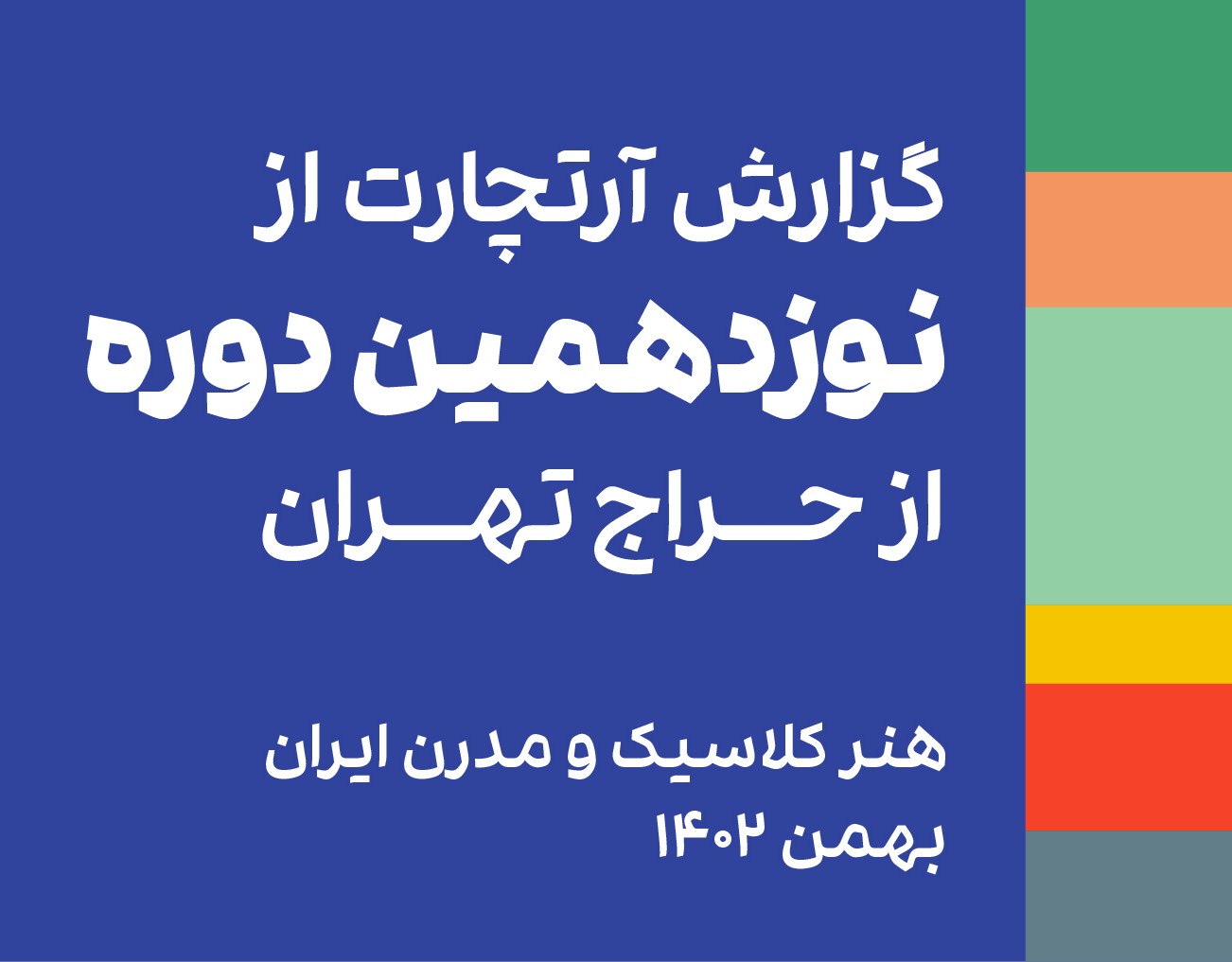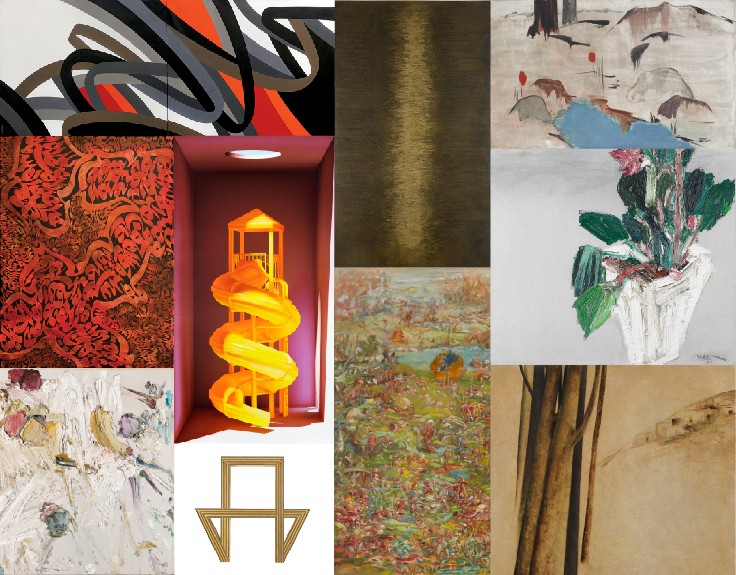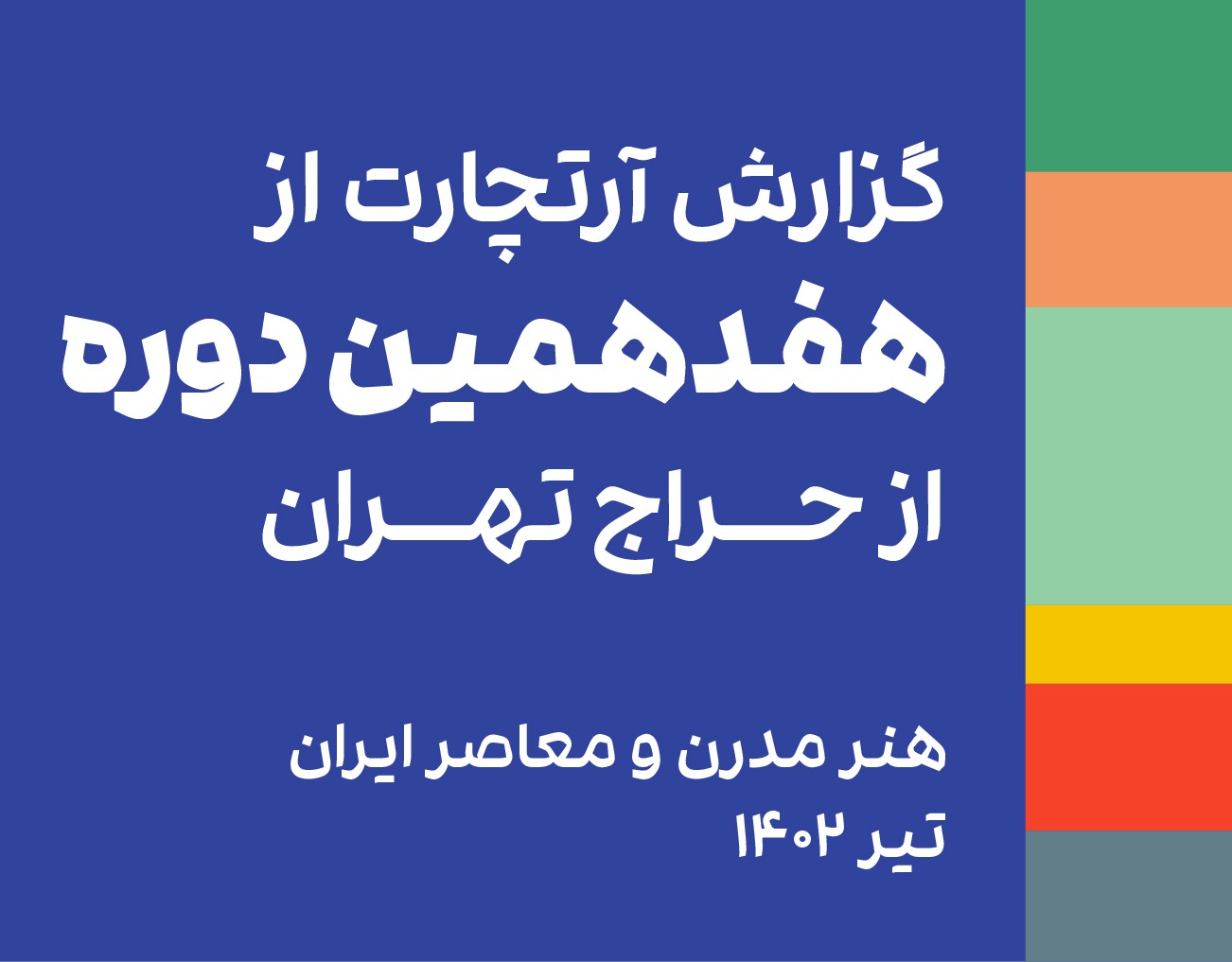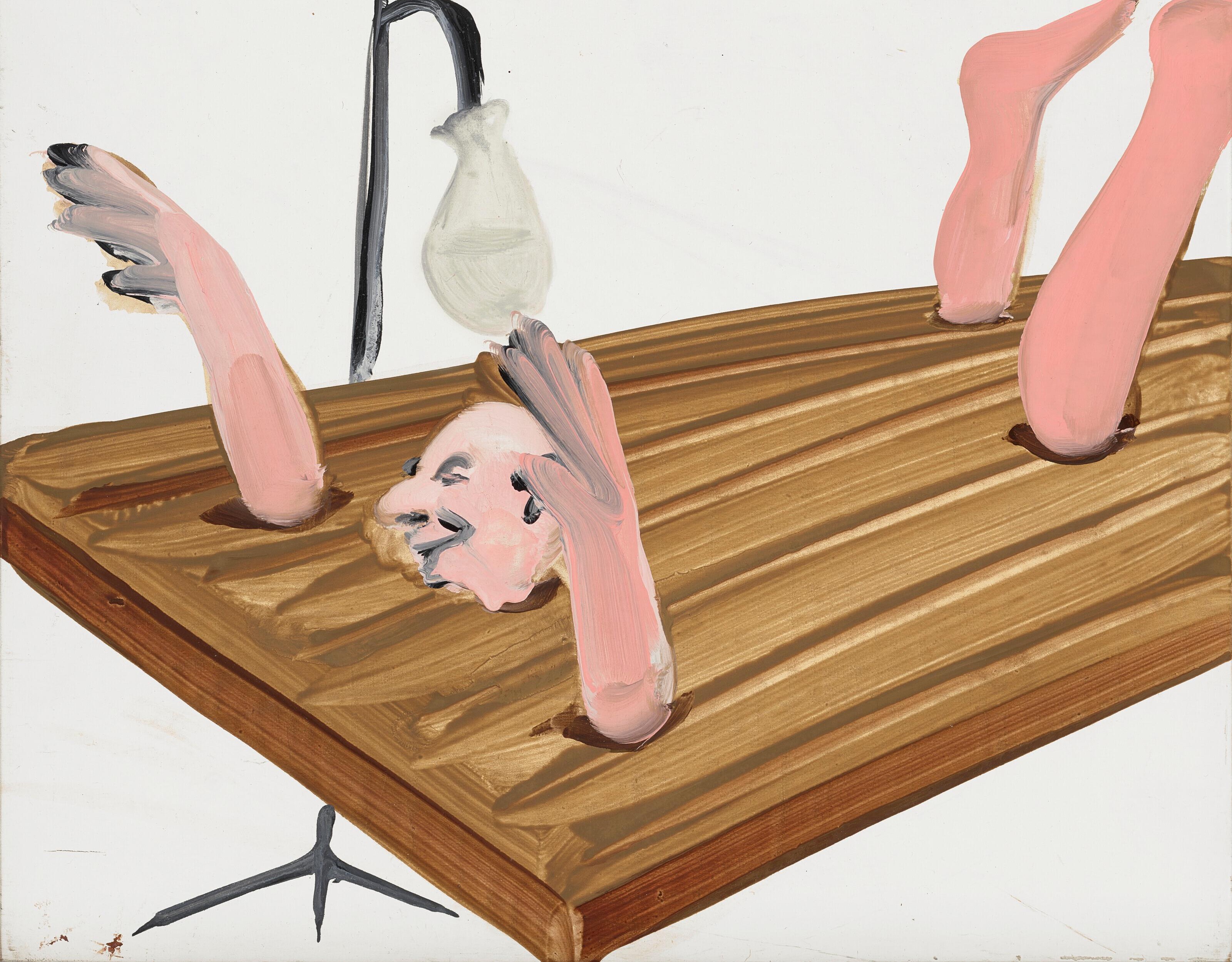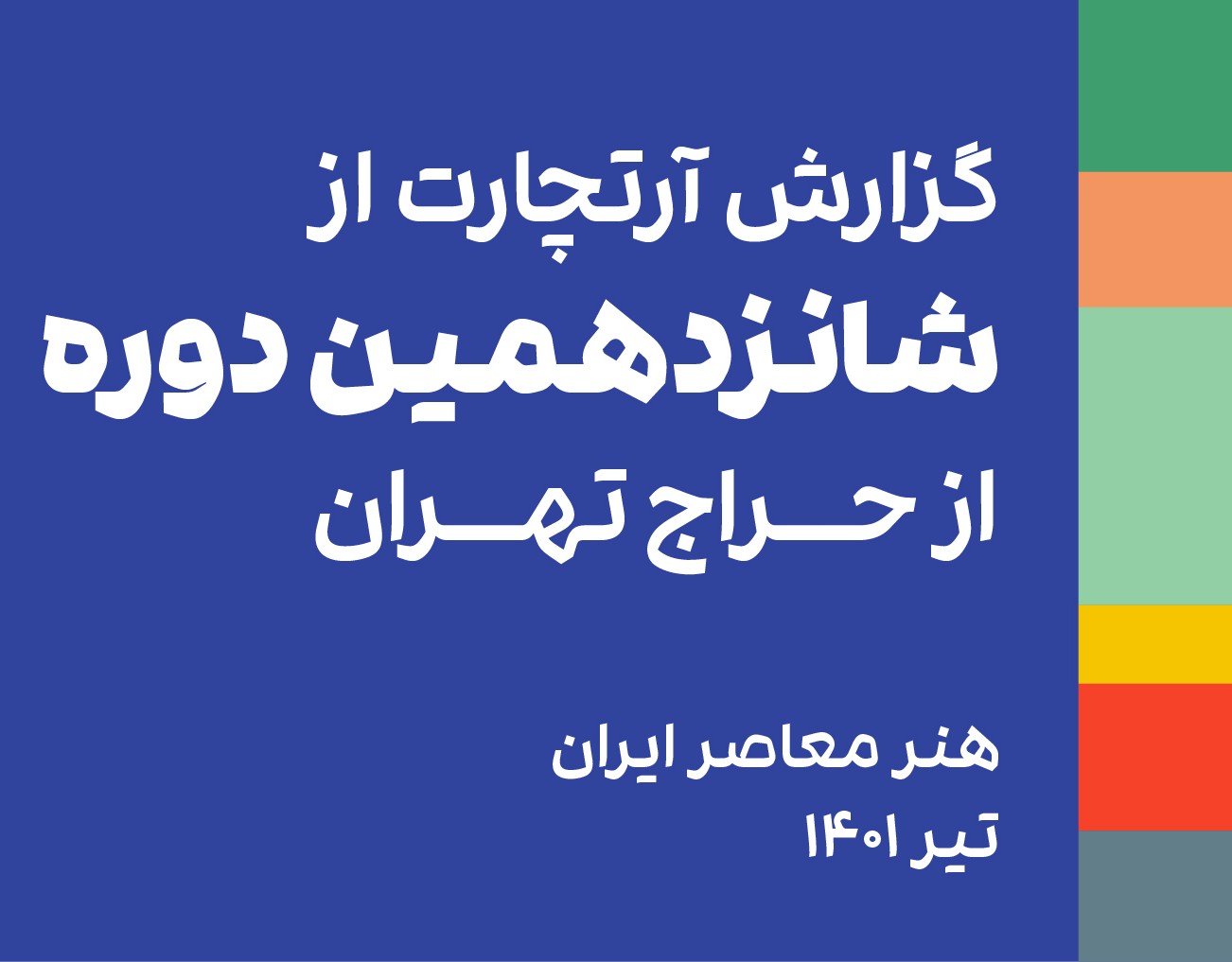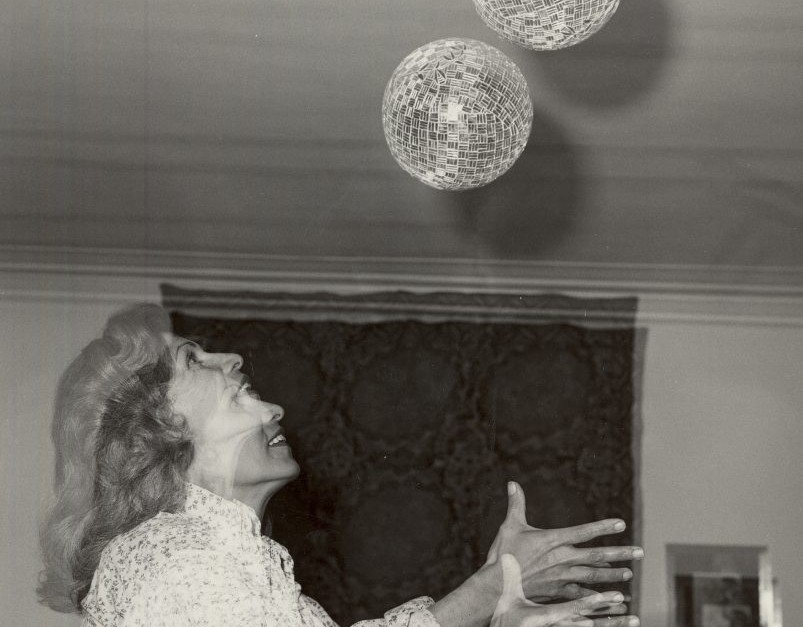About Monir Farmanfarmaian
Monir Shahroudi Farmanfarmayian is a modern artist who has created contemporary art works by using the "Āina-kāri" and "Under Glass Painting" technique. She dropped out of the Faculty of Fine Arts in Tehran and went to New York to continue her education. She studied at Cornell University, the Parsons School of Design, and the student community from 1945 to 1953. After returning to Iran, she exhibited her works in the first Tehran Biennial in 1958 and won an award.
In 1962, she held her first solo exhibition at the Faculty of Fine Arts in Tehran. Since then, she has showcased her paintings and Āina-kāri works many times in Iran and other countries. In 2014, an exhibition of her works was held at the Guggenheim Museum and the permanent museum of Monir Farmanfarmayian was established in 2017 at the Negarestan Museum.
Her early works mainly dealt with the subject of flowers, and from the late 1940s she created geometric designs using mirrors and plaster, based on the mathematical principles of traditional Āina-kāri designs. In the 1991s, she created a collection of wooden boxes in which she mounted her nostalgic photographs, objects and designs.
"Monir's relationship with architecture is very interesting to me," says Frank Stella, a famous American painter and sculptor. The true manifestation of Islamic geometry depends on its use in architectural levels, but Monir has separated it from the wall and basically turned it into its own level. "She has turned geometry, which is essentially dependent on architecture, into an independent level."
In 1962, she held her first solo exhibition at the Faculty of Fine Arts in Tehran. Since then, she has showcased her paintings and Āina-kāri works many times in Iran and other countries. In 2014, an exhibition of her works was held at the Guggenheim Museum and the permanent museum of Monir Farmanfarmayian was established in 2017 at the Negarestan Museum.
Her early works mainly dealt with the subject of flowers, and from the late 1940s she created geometric designs using mirrors and plaster, based on the mathematical principles of traditional Āina-kāri designs. In the 1991s, she created a collection of wooden boxes in which she mounted her nostalgic photographs, objects and designs.
"Monir's relationship with architecture is very interesting to me," says Frank Stella, a famous American painter and sculptor. The true manifestation of Islamic geometry depends on its use in architectural levels, but Monir has separated it from the wall and basically turned it into its own level. "She has turned geometry, which is essentially dependent on architecture, into an independent level."
The Most Expensive Artwork
At Auctions
First Attendance
24 May 2006
# Attendance
80
# Artworks
107
Average Realized Price
132,937 USD
Average Min Estimate
92,476 USD
Average Max Estimate
127,382 USD
Sell-through Rate
83.962%
Average Growth of Artwork Worth
31.186%
Timeline
Silsila: Highlights from the Dalloul Collection Including Modern and Contemporary Middle Eastern Art auction
6 November
Modern & Contemporary Middle East auction
28 October
The 23rd Tehran - Modern and Contemporary Iranian Art auction
22 May
Fragments of Persian Modernity: Selected pieces from Iranian Modern and Contemporary Art exhibition
13 April
Origins auction
8 February
Middle East / 20th Century Art auction
19 December
Contemporary Day auction
21 November
Modern and Contemporary Middle Eastern Art auction
13 November
Modern and Contemporary Middle Eastern Art Including Highlights from the Dalloul Collection auction
4 November
Modern and Contemporary Middle Eastern Including Highlights from the Dalloul Collection auction
31 October
Timeless Creation exhibition
25 October
The 21st Tehran - Contemporary Iranian Art auction
11 October
Decades Projects 1300-1310 exhibition
2 August
Modern and Contemporary Art Dubai auction
31 May
Nine Works of Iranian Modern Art exhibition
29 May
A Collection exhibition
10 May
The 19th Tehran -Classic and Modern Iranian Art auction
24 January
The 17th Tehran Modern and Contemporary Iranian Art auction
18 July
Summer Spectacular Estates auction
11 June
Modern and Contemporary Middle Eastern Art auction
16 May
Ordibehesht exhibition
12 May
Modern and Contemporary Art auction
31 January
Perpetual Inventory, Volume 1: An Exercise in Looking exhibition
19 December
Mirror Garden exhibition
18 November
Modern and Contemporary Middle Eastern Art, Part I auction
2 November
Tehran- 16th- Iranian contemporary art auction
1 July
The Language of Symbols exhibition
23 June
April Day 2: Important Works of Art auction
28 April
20th Century Art / Middle East auction
23 March
A Selection of Modern Works from The Laal Collection exhibition
25 February
Point Of View exhibition
25 February
January Day 2, Fine Art and Asian Art auction
27 January
The 15th Tehran- Modern Iranian Art auction
14 January
Rebel, Jester, Mystic, Poet Contemporary Persians—The Mohammed Afkhami Collection exhibition
10 September
A Mirrored Garden Online exhibition
22 May
Mirror & Works exhibition
29 January
The 13th Tehran- Modern and Contemporary Iranian Art auction
15 January
Middle Eastern, Modern and Contemporary Art auction
11 November
20th Century Art / Middle East auction
20 October
This Too Shall Pass auction
25 June
Modern and Contemporary Middle Eastern Art auction
11 June
Contemporary Curated auction
21 April
20th Century Art / Middle East auction
24 March
دوازدهمین دوره حراج تهران auction
17 January
Contemporary Curated auction
19 November
Middle Eastern, Modern and Contemporary Art auction
23 October
Modern and Contemporary Middle Eastern Art auction
23 October
20th Century Art / Middle East auction
22 October
Sunset, Sunrise exhibition
12 October
یازدهمین دوره حراج تهران auction
5 July
XXTH, MODERN AND CONTEMPORARY PAINTINGS auction
29 May
دهمین دوره حراج تهران auction
11 January
Middle Eastern, Modern and Contemporary Art auction
24 October
20th Century Art / Middle East auction
23 October
The Breeze at Dawn Has Secrets to Tell You exhibition
24 September
Sunset, Sunrise exhibition
10 August
The 9th Tehran- Classic and Modern Iranian Art auction
29 June
Artnet Online - Berlin - May 2018 auction
16 May
20th Century Art / Middle East auction
24 April
هشتمین دوره حراج تهران auction
12 January
Hôtel Drouot, Salles 5 et 6, Art Moderne et Contemporain du Moyen-Orient* auction
6 December
Middle Eastern, Modern and Contemporary Art auction
25 October
20th Century Art / Middle East auction
23 October
هفتمین دوره حراج تهران auction
7 July
Modern and Contemporary Middle Eastern Art auction
26 April
20th Century Art/ Middle East auction
25 April
Modern & Contemporary Art auction
18 March
The 6th Tehran- Contemporary Iranian Art auction
23 December
20th Century Art: Middle East auction
20 October
Modern & Contemporary Art auction
18 October
پنجمین دوره حراج تهران auction
27 May
Alchemy: Objects of Desire auction
21 April
20th Century Art / Middle East auction
20 April
Modern & Contemporary Art auction
16 March
Dubai: Modern and Contemporary Art Now and Then auction
16 March
Infinite Geometry exhibition
5 January
20th Century Art - A Different Perspective auction
2 December
Modern & Contemporary Art auction
20 October
Contemporary Art / Doha auction
21 April
Modern & Contemporary Arab, Iranian and Turkish Art auction
18 March
Contemporary Art auction
13 October
Islamic and Indian Art auction
7 October
Monir Farmanfarmaian 2004-2013 exhibition
19 March
Contemporary Art/Doha auction
22 April
Contemporary Art / Arab & Iranian auction
4 October
Kaleidoscope exhibition
27 January
International Modern and Contemporary Art auction
26 October
Contemporary Art / Arab & Iranian auction
20 October
International Modern & Contemporary Art auction
27 October
Modern & Contemporary Middle Eastern & South Asian Art auction
3 June
International Modern & Contemporary Art auction
29 April
International Modern and Contemporary Art auction
30 October
Modern and Contemporary Arab and Iranian Art auction
23 October
Contemporary Art Day Sale auction
18 October
International Modern and Contemporary Art auction
30 April
Modern & Contemporary Arab & Iranian Art auction
24 October
International Modern & Contemporary Art auction
24 May
Articles
Artchart Half-Year Auction Market Report on Iranian Art - H1 1404 (Mar–Sep 2025) 8 December 2025
Artchart Half-Year Auction Market Report on Iranian Art - H1 1404 SH (Mar–Sep 2025) provides a detailed overview of the key trends and developments observed in this six-month period of the Iranian calendar year. The report examines the presence and performance of Iranian artworks in auctions held worldwide during this timeframe, including the activities of major auction houses, the...
Iranian Art in the Secondary Market: Spring 2025 Report 23 July 2025
The Iranian art scene in the first quarter of 1404 SH (March to June 2025) witnessed a diverse range of artistic and commercial events. The Tehran Auction, held on May 22, focused on modern and contemporary Iranian art, offering 100 works by 97 Iranian artists. Galleries inside the country showcased exhibitions of modern and contemporary masters alongside younger artists, while inte...
The Iranian Art Market Report | 1403 SH (March 2024–March 2025) 11 May 2025
Artchart's 1403 SH (March 2024–2025) report offers a comprehensive analysis of the Iranian art market, highlighting key trends and developments over the past decade. It covers auction house activity, top-selling cities, leading Iranian artists, high-value artworks, and the most active galleries and urban centers across the country.Download the full report from the attachment to expl...
Middle Eastern Art Auctions in Fall 2024: Insights into Iran's Art Market 27 November 2024
The October and November 2024 modern and contemporary Middle Eastern art auctions demonstrated significant achievements by artists from across the region. Held in Paris and London by Sotheby’s, Christie’s, Bonhams, and Millon, the six auctions featured 438 works by 235 artists, generating total sales of $13.14 million. Egyptian and Iranian artists led the market in terms of volume a...
Report on the Twenty-First Tehran Auction: The Second Online Auction of Contemporary Iranian Art 15 October 2024
Artchart, a data analytics and mining platform for the Iranian art market, has been dedicated to recording and analyzing economic data related to Iranian art since its establishment in 2019. To date, this platform has closely examined twenty editions of Tehran Auction, and the following report will delve into the twenty-first edition of the auction. This edition, focused on contempo...
Takin Aghdashloo Discusses Why Galleries Prefer London in Exclusive Artchart Interview 18 June 2024
Takin Aghdashloo, the curator of the exhibition "Nine Works from Iranian Modern Art,” elaborated on the details of this exhibition and curatorship matters in a conversation with Artchart. The exhibition took place from the 9th to the 13th of Khordad (May 29th to June 2nd) at the temporary space of Bavan Gallery in Cromwell Place, London. Featuring works by nine artists including Ayd...
A Review of Christie's Modern and Contemporary Dubai Online Auction, Spring 2024 2 June 2024
The Modern and Contemporary Dubai online auction was held on Christie's website from May 9 to May 31, 2024. In this auction, works by 70 artists were featured, totaling 90 artworks. Out of these, 75 pieces were sold, resulting in a total sale of $2.2 million. Fourteen Iranian artists also had their works presented in this auction, achieving a 100% sales rate. The most expensive piec...
The Venice Biennale: A Creative Economy-Based Art Enterprise 14 May 2024
The Venice Biennale is one of the oldest and most prestigious avant-garde art exhibitions in the world, with a high level of credibility. In addition to presenting artists' works and introducing them, this biennial is important for predicting and creating new artistic trends. It manages its events with a multidisciplinary model of organization and management, which has made its natu...
Iranian Art Market Report for 1402 SH (2023-2024) 20 April 2024
Artchart, which had previously examined the Iranian Art Market in 1401 SH (2022-2023), has once again provided an in-depth report for 1402 SH (2023-2024). The forthcoming report will analyze the data collected in 1402 SH and compare it to previous years to illustrate the current state and trends within the Iranian art market. The initial section provides an overview of the mos...
A Look at the Market of Works of Iranian Female Artists 16 March 2024
In its annual publications, Artchart consistently evaluates the contributions of both male and female artists. Notably, in the report from the 19th Tehran auction, there is a focused analysis on the achievements of female artists throughout all Tehran auctions. The document presented below has been meticulously prepared to offer an in-depth investigation into the market presence of...
The 19th Tehran Auction Report 10 February 2024
The 19th Tehran auction, also known as the 5th Classic and Modern Iranian Art auction, took place on January 26, 2024, at Parsian Azadi Hotel, Tehran. With a focus on both modern and classic styles, this auction featured 89 works by 69 artists, resulting in the successful sale of 82 pieces. Remarkably, the auction achieved an impressive sales rate, with 92% of the presented works fi...
The most expensive Iranian works sold in 2023 27 December 2023
With the end of 2023, the Artchart team decided to introduce 10 expensive works of Iranian artists that have been sold at auctions. These works are selected and arranged based on Atchart database and dollar rate. In this short essay, you will read about these works and the successful artists of 2023.
۱7th Tehran Auction Sales Report 26 July 2023
The 17th Tehran auction: modern and contemporary, was held on Friday July 21st, 2023 at Parsian Azadi Hotel. This auction achieved a total sale of 214 billion tomans equivalent to 4.3 million dollars, which was a growth of 77.8% compared to the previous period. Artchart has observed the 17th Tehran auction in the upcoming report.
MODERN & CONTEMPORARY MIDDLE EASTERN ART: A REPORT 23 May 2023
In this report, the works of Iranian artists in the online auction of Christie's Dubai in the contemporary and modern art of the Middle East are discussed. In this auction, 15 works by Iranian artists were present, from veterans such as Manouchehr Yektai to young contemporary artists such as Rokni Haerizadeh. Information such as total sales, growth rate and the most expensive works...
Sixteenth Tehran Art Auction Report 3 July 2022
On the evening of Friday, July 1, 2022, the sixteenth edition of the Tehran Auction dedicated to contemporary Iranian art was held at the Parsian Azadi Hotel. At this event, 120 artworks by 117 artists were offered for sale. The auction successfully sold all of the artworks, achieving a total sales figure of 78 billion and 100 million tomans. The average price per piece (by dividing...
Breaking Glass; Munir Farmanfarmaeian in a Conversation with Stephen Bailey 12 January 2022
This interview was conducted by Stephen Bailey on April 22, 2013. It was translated by Zohreh Mosayebi and published in the online magazine, Tootimag.
